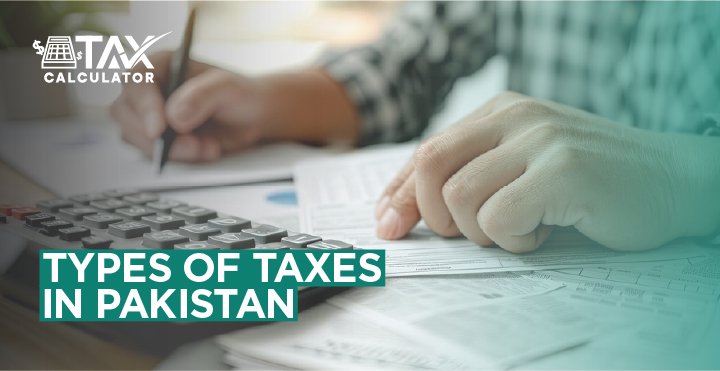Deferred tax in Pakistan refers to the future tax impact of temporary differences between accounting income and taxable income. It shows how timing mismatches in depreciation, provisions, or carry-forward losses affect a company’s reported tax expense versus its actual tax paid. Understanding deferred tax is essential for preparing or interpreting financial statements under IAS 12 Income Taxes, the international standard governing accounting for income taxes, and Pakistan’s corporate tax laws, because it connects today’s accounting choices with tomorrow’s tax outcomes.
Here’s everything you need to know about deferred tax under Pakistan’s accounting and tax framework, including IAS 12 rules, examples, and compliance tips.

Deferred Tax Rates & Regimes in Pakistan
The standard corporate tax rate in Pakistan is 29% as of 2025. Super tax has also been introduced for high-income / specified sectors; these can affect the effective marginal tax rates and hence deferred tax measurement.
There is also a minimum tax / alternate corporate tax (ACT) in Pakistan, which sometimes binds (i.e., your “normal tax” might be lower than these thresholds).
Interaction with Minimum Tax (Section 113) and Alternate Corporate Tax (ACT)
Deferred tax is not recognized on minimum or alternate corporate tax, since these are based on turnover or adjusted accounting profits rather than taxable income. However, companies subject to ACT should still disclose reconciliations explaining differences between accounting and taxable profits.
Super Tax and Temporary Levies
When measuring deferred tax, use tax rates that are enacted or substantively enacted by the reporting date. Temporary surcharges such as the Super Tax are considered only if officially enacted for the periods when temporary differences are expected to reverse.
Depreciation & Allowances Differences
In Pakistan, the tax depreciation rules (i.e., how much depreciation is allowed by the FBR) may differ significantly from your accounting depreciation policy, creating a major source of temporary differences.
For example, tax depreciation may be on a prescribed straight-line or declining balance basis, subject to rates defined in the Income Tax Ordinance, whereas accounting depreciation might be more aggressive or tailored to fair values. That gap creates deferred tax exposures.
A company’s machinery has a carrying amount of Rs 10 million, while its tax written-down value under the Income Tax Ordinance is Rs 8 million. The difference of Rs 2 million is a taxable temporary difference. If the applicable corporate tax rate is 29%, the deferred tax liability would be:
Rs 2,000,000 × 29% = Rs 580,000.
Carryforward Losses & Tax Credits
Another major driver of deferred tax assets in Pakistan is carry-forward losses. Pakistan’s tax law allows carry-forward of business losses (under certain conditions) for a certain number of years. These generate DTAs (if it’s probable you’ll have future taxable income). However, use of these DTAs is constrained by the requirement of probable future profits and the risk of tax law changes or restrictions.
In Pakistan, business losses can generally be carried forward for six assessment years, while capital losses are limited to four years. These timelines directly affect deferred tax asset recognition. DTAs should not be recognized beyond the legally allowed carry-forward period unless supported by convincing evidence of future taxable income.
A special note: in the context of export businesses, recent changes (Finance Bill / Ordinance) have required careful measurement of deferred tax on export incentives, rebates, and concessions.
Deferred Tax on Investments in Subsidiaries or Associates
Under IAS 12, deferred tax must be recognized for temporary differences related to investments in subsidiaries, associates, or joint ventures unless the investor can control the timing of reversal and it is probable the difference will not reverse in the foreseeable future. This often applies to group structures common in Pakistani conglomerates.
Deferred Tax Audit, Challenges & Best Practices in Pakistan
Auditors in Pakistan often focus intensely on whether deferred tax assets (DTAs) are valued properly, whether recognition criteria under IAS 12 are met (especially for future profit projections), and whether disclosures in notes are sufficient and transparent.
Management must prepare robust documentation, business plans, forecasts, and assumptions, showing that it is probable that future taxable profits will exist to realize DTAs; a lack of such documentation often results in audit challenges in Pakistan.
A prudent, conservative approach, using reasonable but not overly optimistic forecasts; regular (e.g., annual or periodical) reviews of deferred tax models; and collaboration among tax, finance, legal, and audit teams, are considered best practices in Pakistan to ensure reliability.
Disclosure Requirements under IAS 12
Companies must disclose:
- A reconciliation between the statutory tax rate (e.g., 29%) and the effective tax rate, showing how deferred tax items affect the total.
- The composition of deferred tax assets and liabilities (e.g., depreciation differences, provisions, losses).
- Unrecognized DTAs and the reasons they were not recognized.
- Impact of tax rate changes on deferred tax balances, when applicable.
Offset Conditions
Deferred tax assets and liabilities can be offset only if they relate to the same taxable entity and the same tax authority, and there is a legally enforceable right of set-off. Otherwise, they must be presented separately on the balance sheet.
Conclusion
Though it may seem minor and tucked away as a technical detail in a company’s financial statements, deferred tax tells a narrative about timing, planning, and financial clarity. For companies operating in Pakistan, where tax compliance standards are evolving, understanding the complexities of deferred tax is critical to identifying and reporting accurate financial situations.
Deferring tax liabilities reduces uncertainty in planning for a company’s future cash flows and liabilities. Conversely, poorly managed deferred tax liabilities lead to unsubstantiated complexities in a company’s financial statements and invite unnecessary queries from auditors.
For expert assistance in evaluating, reporting, or assessing deferred tax as it relates to corporate taxation in Pakistan, reach out to us at +92 321 6306286.



